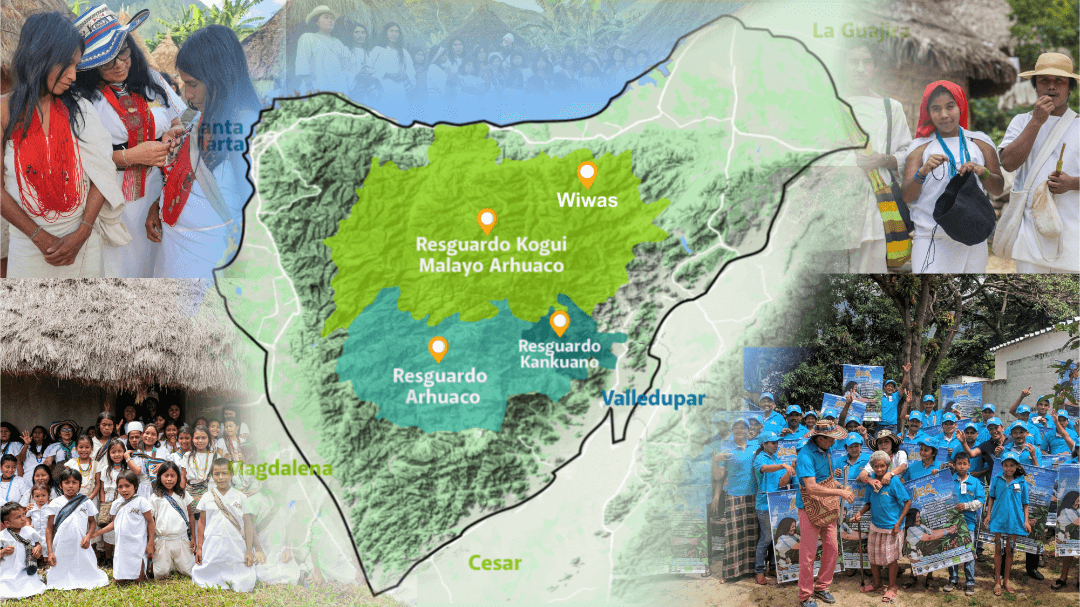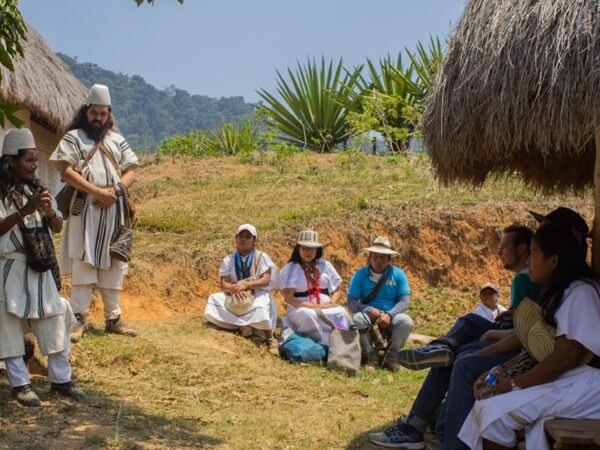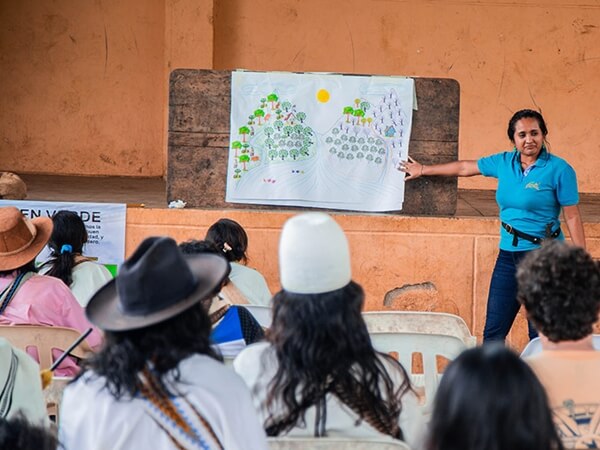LANDSCAPE PARTNERSHIP
LANDSCAPE
- Sierra Nevada de Santa Marta and Serranía del Perijá, Colombia
Colombia’s Sacred Sierra landscape unites the Sierra Nevada de Santa Marta and the Serranía del Perijá mountain ranges along the country’s northern Caribbean coast. Declared by UNESCO as a Biosphere Reserve in 1979, this region contains diverse and distinct ecological zones —from wetlands and mangroves to tropical rainforests, deserts and alpine tundra. The region’s 50,000 residents represent four Indigenous communities, all direct descendants of the ancient Tayrona culture and all dependent on the surrounding natural resources for their livelihoods.
Since 1995, the Native Agroecological Producers and Farmers (ANEI) organization has convened a Landscape Partnership that protects the area’s unique ecological diversity while ensuring a sustainable future for local people. Focused on the organic production of high-quality coffee, ANEI and its partners have implemented holistic, sustainable projects that strengthen collaborative efforts to reclaim social, economic and cultural rights while promoting food security and offering healthy products to the world.
Despite its protected status and the efforts of the Landscape Partnership, the Sacred Sierra still faces high deforestation rates and environmental degradation from cattle grazing, mass tourism, mining and dam construction. The increasing impact of climate change also poses a high risk to the livelihoods of communities and the region’s biodiversity. Meanwhile, limited access to social services such as health, education, basic sanitation, potable water and electricity places additional burdens on the local communities, contributing to unsustainable resource extraction.
The Sierra Sagrada initiative is supported by Ethos Agriculture. Ethos supports cooperatives to claim their role as leaders in the sustainability movement and design more holistic approaches that leverage trade, research and development. Ethos is keen to transform cooperatives into landscape stewards to increase farmer income, develop the next generation of sustainability leaders and demonstrate an alternative approach to rural development.

Landscape Snapshot
AREA
Sacred Sierra is a landscape where four indigenous communities–the Koguis, Kankuamo, Arhuaco and Wiwas–coexist in perfect balance with nature. These people strive for the harmonious development of communities that cross borders, live in harmony and benefit wholly by caring for Mother Earth.
The Sacred Sierra landscape is home to agricultural activities and small-scale commerce.
Coffee, cocoa, sugarcane, cassava, corn, beans, plantains and small livestock such as chickens, pigs, cows and goats
The region between the Sierra Nevada de Santa Marta and Serranía del Perijá mountain ranges is sacred to the inhabitants and is therefore protected by the different Indigenous communities there and various governmental entities. No other land-use activities are allowed there except for agricultural and livestock production.
Tropical rainforest
- Native Agroecological Producers and Farmers organization (ANEI)
ANEI was created to promote and preserve agricultural practices from the Arhuaca cosmovision, which respects Mother Earth as the origin of all things. This worldview leads Sacred Sierra’s people to hold awareness for their own and neighboring communities in order to promote sustainable, organic and environmentally friendly farming practices.
The Sacred Sierra Landscape Partnership is well on its way to tackling many of the challenges the region faces. With support from 1000 Landscapes for 1 Billion People, the partnership has developed a common understanding of the landscape’s challenges and opportunities. This work is helping it establish a shared vision for achieving a balance between trade, environmental preservation and economic and social development for local communities. Partners have drafted a collaborative action plan that includes programs rooted in traditional ecological knowledge that supports local ownership, promotes regenerative agriculture and aids rural development.


